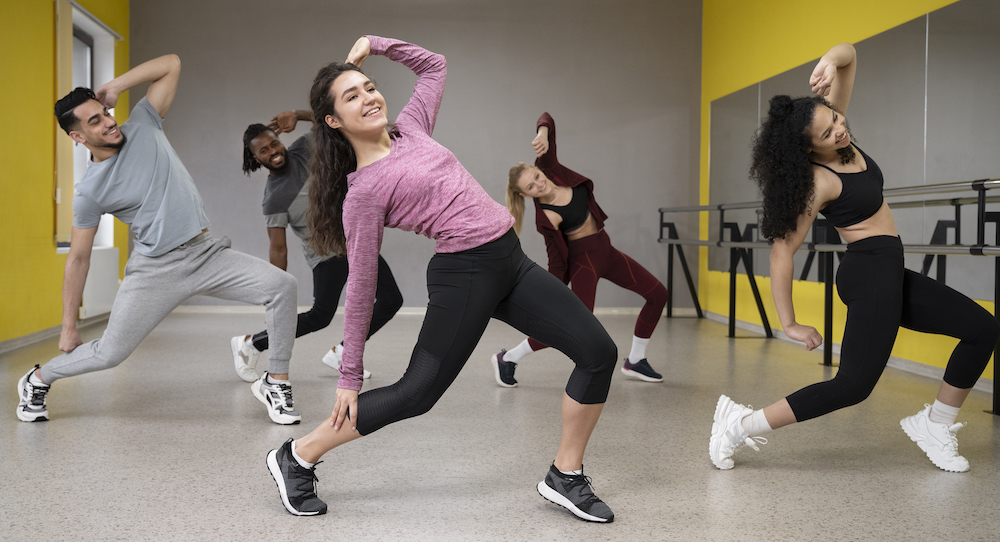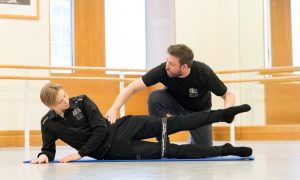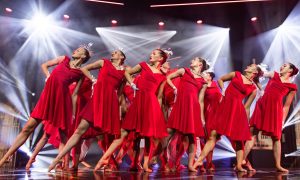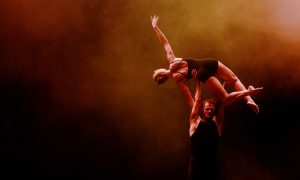You don’t have to convince the dance community that dance is the best form of exercise, but it seems the medical community is starting to take notice. Okay, so they have been for a while now, but according to a new study published in Sports Medicine, structured dance activities are just as and in some cases superior to traditional forms of exercise such as walking and weight lifting. According to this systemic review and meta-analysis published in January 2024, structured dance activities across various genres and with people aged 7-85 years were associated with improved cognition, reduced symptoms of depression, enhanced mood, and increased motivation and overall well-being.
What feels groundbreaking about this study is that it’s not just looking at physical and cognitive benefits, but the social and emotional ones as well. That’s the beauty of dance; it addresses the entire individual and what makes structured dance activity so vital is that it allows people to heal in community and in the presence of others witnessing you. While this can be daunting for many people, this is a powerful recognition of the self and allows for a deeper level of validation and acceptance.
While dance in all forms is beneficial, structured dance supports social and cognitive aspects that improvisational and independent dance might not address. And while both support emotional and psychological well-being, for those especially in need of social opportunities and cognitive support, a group dance class can make all the difference. The structure itself provides direction, containment and repetition. It can often be goal-oriented and can teach mastery or a skill. While I do not think this is the only way to engage in dance, it is these properties that allows dance to provide a holistic approach to health and wellness. Dance truly engages all areas of the brain, making it a comprehensive form of physical activity.
Here are some important ways in which structured dance supports well-being:
#1. Dance makes you smarter.
Let me explain. Not only does dance improve cognitive function, memory, attention and focus, but it also has the potential to enhance your emotional intelligence. We can learn to get more in tune and in touch with our body, learning to lean into our emotions and feelings.
#2. Dance makes us social!
Dance supports relational learning. We learn how to be with and around others when we move together in supportive spaces. Dance allows us to learn social skills and cues as well as appreciate others’ strengths and differences.
#3. Let’s get together!
Dance is a universal language that transcends the barriers of regional dialects. You can be anywhere in the world and find a common ground using movement and dance. Additionally, dancing with others sparks the mirror neurons in our brains that pick up on the movement happening around us. This is another way we can learn to attune and empathize with those who may have different experiences from us allowing us to truly dance in another person’s shoes.
Whether it is dancing in your kitchen, out at the bar or in a formal dance class, I think we can all agree that dance is necessary to the human condition. It is expressive and transcends words which don’t always target what and how we feel. This study is a reminder that there is benefit to the structure of a dance class especially for those of us who may have had a difficult past in the dance studio. Participating in structured dance doesn’t mean that the educator has power over your body or knows more about your own body than you do. The experience of learning alongside a dance educator can be much like the therapeutic relationship I have with my clients. Feeling supported in your goals, being seen and witnessed, as well as having someone who can provide appropriate reinforcement, feedback, and positive regard enhances the overall experience. While dance can be done anywhere and by anyone, this study reminds us that when done in community and with guidance and support, dance can be the missing piece to coming back to a sense of wholeness. The structure in the classroom provides the structure that many of us are searching for in our lives and in the world.
By Erica Hornthal, LCPC, BC-DMT, Dance/Movement Therapist, Chicago Dance Therapy.
Erica Hornthal, known as “The Therapist Who Moves You,” is a board-certified dance/movement therapist and licensed clinical professional counselor. She is the founder and CEO of Chicago Dance Therapy and the author of Body Aware: Rediscover Your Mind-Body Connection, Stop Feeling Stuck, and Improve Your Mental Health through Simple Movement Practices.














